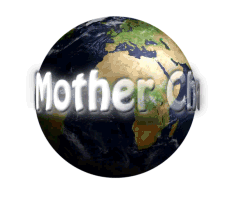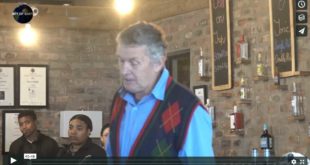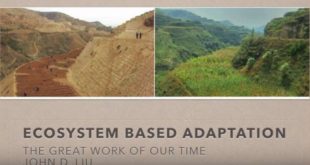South African Wild Bees (Part One)
Mother Channel interview with bee researcher, Ms Jenny Cullinan, co-founder of UJUBEE, an environmental team who conduct research on South African wild bees in the wild, mainly in the Fynbos rich regions of the Cape, South Africa.
We have been researching South African wild bees for the last 3 years, mainly at Cape Point Nature Reserve and have found 59 nests in an area of approximately 77 sq. kilometers, to date. The unique Cape Honey Bee (‘apis mellifera capensis‘) derives from the African Bee (Apis mellifera scutellata), and is only bee in world that can clone itself, an adaptation to the particular climate in the Western Cape, who live in the fynbos biome. Research is also being done on solitary and sub-social bees, and we look at the ecology of bees in general, i.e. what bees encounter, what encounters bees, etc. e.g. bee-eating lizards and birds and even mongoose who raid nests at night for honey, including all behavioural aspects of what happens out in the wild. Most research has happened for agricultural or scientific reasons and has been very specific, not having a broad sense of connectivity of everything.
Bees worldwide are not doing very well, humans, as a species, have failed them in many ways and since the inception of UJUBEE, it has become very clear that bees in the wild need to be understood in terms of what they need to be healthy. Our aim as bee conservationists in South Africa is to protect bees in their natural habitat, SA being a unique situation, in that 90% of honeybees are in the wild and it is very important that those areas remain protected, as the genetic pools in our National parks and Game reserves must be kept strong so as to maintain a healthy bee population. Any interference, whether from human encroachment by introducing hybridized bees into existing wild swarms or habitat changes, etc. would result in the wild bees genetic information being diluted and weaken the pool, as the drones tend to congregate in specific areas and they pass on the genetic information to the hives and newly formed colonies.
We have teamed up with Prof. Jürgen Tautz, one of the leading bee biologists in world and founding chairman of the Bee Research Würzburg eV, since 2004 and professor at the Biozentrum of the University of Würzburg, and are doing collaborative work with them, and now looking at extending research to the whole peninsula, i.e. Table Mountain National Park (world heritage site).
South African wild bees pass on genetic information about flight paths, where to find forage, how to get there on winds, etc. and moving them around for pollination purposes, etc. causes them to lose track and they have to refigure where the floral sources of forage are all over again through relearning which causes stress factors like exposure to disease, general weakening and affects what bees do naturally.
Growing for bees – the development of common areas on the peninsula where bees will be safeguarded and breed outwards is very important, which translates to: when bees happy and have sufficient forage, then new swarms are reproduced. Most honey produced from alien plants, i.e. eucalyptus, citrus, fruit trees, canola, etc., whereas the indigenous plants very good for the medicinal purposes of keeping bees healthy and for essential oils used in manufacture of propolis. What to plant for bees – each biome is different – Indigenous: Buchu’s, protea repens, pin cushions, erica’s etc. and in own gardens: herbs, lavender, basil, rosemary, sage, lemon grass, etc. as insects are drawn to yellows, blues, whites as primary colours, but also reds and seed acquisition should be done from flowering plants that bees favour and gather from, not hybridized plant species.
Every hive needs 10 x 10m² of annual flowering plants, e.g. 100 hives would mean a very large planted area to accommodate the food habitat for bees, an example of numbers is 20 hives equal to 1 million pollinators. Another issue is that hives are wrong shape, e.g. Langstroth hives (hive made up of stacked boxes of various depths, a floor, inner cover and roof), have been developed for the bee-keeper -not bees! Around the world there is currently a move away from these type of hives to cavity type dwellings, i.e. round, spherical shapes like ‘log hives’, etc made from natural materials, very unlike the horrendous ‘flow hives’ made from plastic with tap for instant honey access direct out of the hive, from Australia.
What we are doing to our planet is removing a ‘keystone species’ (bees), causing the collapse of botanic systems, which would not only be local as in Cape Floral kingdom, but worldwide botanic systems. The world needs to go back to a more connected sense of ‘what it is to be a part of the ecology of this planet’ – We are not seperate from it and we are not greater than..
Related links : A blog on conservation of bees at: http://ujubee.com/
Prof. Dr. Jurgen Tautz : https://www.uni-wuerzburg.de/en/sonstiges/meldungen/detail/artikel/erfolgreic-26/
Plight of bees in SA semi-deserts : http://studylib.net/doc/10463115/the-plight-of-the-bee–in-south-africa%E2%80%99s-semi-deserts-con…http://www.sanbi.org/sites/default/files/documents/documents/gumsbees-web-version-hyperlinks.pdf
 Mother Channel Environmental, climate change news and media.
Mother Channel Environmental, climate change news and media.



